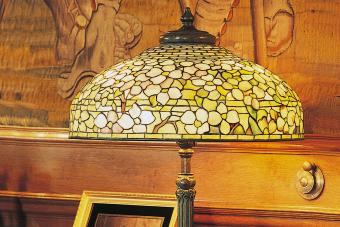
Collectible cue sticks are an unusual game collectible that can turn into a rewarding, and lucrative, hobby. Certain cues are very valuable, depending on the maker. While select pool cues can be a good investment, with a rapid appreciation, one should collect them because of the enjoyment they bring, not for financial reasons. The best advice in any type of collectible is to buy what you like. The value of antiques is always in how desirable they are to the collector.
What to Look For
While it may be possible to find a cue stick at an antique auction it is more likely that the collector will need to search on eBay, or with local cue collectors clubs.
One of the most important things to look for is the identity of the maker of the cue. The work of well known cuemakers is generally a wise buy. They are well known because of their commitment to quality and detail, as well as the craftsmanship with which they detail the cue itself.
A cuemaker's first cue is notable, as are any of his firsts. If, for example, he suddenly begins to produce an inlaid cue, or a carved one, the first of that design will be more collectible than the cues that come after it. In the same way cues and cue designs that are produced last are eagerly sought after by collectors.
If a famous player has used a cue in a game, that cue is immediately desirable and collectible. Be careful of this as many players have numerous cues and don't use them. Cues that have been owned by famous players but not used by them in significant games are not very valuable at all.
Always look for quality and craftsmanship in your cues, whether they are brand new or vintage. The higher quality a cue is the more valuable it is, and the more beautiful it will be. If a cue stick has been changed in anyway, refinished or restored, the value of the cue will be greatly diminished. Originality is of primary interest to the collector and for this reason even changing a tip can reduce the value of the stick. Generally it is wise to seek out a good appraiser before making any changes, including repairs, to a collectible cue stick.
Makers of Collectible Cue Sticks
Cue sticks were developed in the 1600s. Before that time billiards were played with sticks called maces. The maces had a large head, like a mallet, and the players would often turn the mace around and use the queue, or tail, to strike the ball. By the latter part of the seventeenth century this practice had developed into the use of the cue.
There are many makers of collectible cue sticks, both past and present, but only a handful are counted among the best and highest quality. Some of these are:
- Herman Rambow
- Harvey Martin
- Gus Szamboti
- George Balabushka
- Frank Paradise
- Burton Spain
- Ginacue
- David P. Kersenbrock
- Craig Petersen
- Tad Kohara
- Joel Hercek
- Barry Szamboti
- David P. Kersenbrock
- Tim Scruggs
- Bill Schick
- Richard Black
- Bill Stroud
- Jerry Franklin
- McDermott
- Wheeler
Resources for the Collector
Collecting cue sticks is a recent phenomenon. There are not a lot of guidelines for collecting, maintaining, restoring, and preserving these beautiful items, so care should be taken by the novice collector to keep up with the latest information. Some excellent resources on the Internet are:
A beginning collector would do well to pick up a copy of The Blue Book of Pool Cues by Brad Simpson. This book has listings of various cues, manufacturers and average prices. By reading this guide the collector will learn to spot valuable cues, as well as those of poor quality. The book contains illustrations and images to help identify and differentiate the makers, past and present. This seems to be the only collectible price guide that specializes in pool cues.
Storing the Cue
Cues should be kept in areas that have a constant temperature and humidity or they can warp. Keep them out of direct sunlight which can dry, fade, and crack the stick. Leaning the cue against a wall can also lead to warping. Most sticks are best kept in special carrying cases. The finish should be protected as much as possible. Wipe down the cue with a soft cloth, and always make sure hands are clean when touching the cue.
By following these guidelines the cue stick will be in good condition for many years to come.







